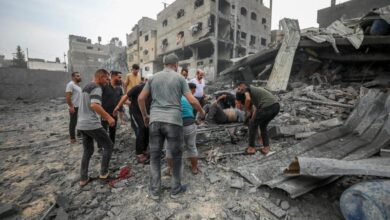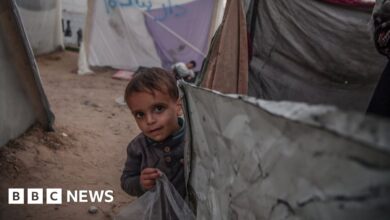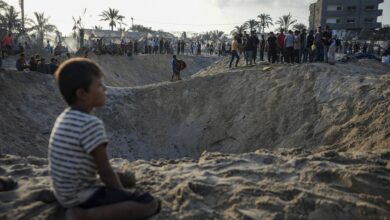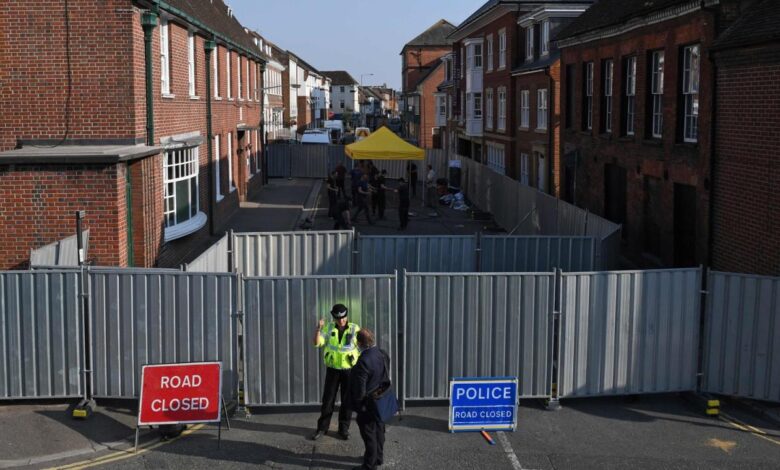
Friday Briefing Two Years of War in Ukraine
Friday briefing two years of war in Ukraine: A comprehensive look at the conflict’s trajectory, from initial predictions to the present realities. The war has dramatically reshaped the geopolitical landscape, impacting not only Ukraine but also its neighbors and the world stage. This briefing explores the military strategies, humanitarian crisis, economic consequences, and international responses over the past two years.
This in-depth analysis delves into the key events, turning points, and milestones that have defined the conflict’s evolution. We’ll examine the evolving battlefield tactics, the impact of Western aid, and the immense human cost of the war. Furthermore, we’ll discuss the economic repercussions, international efforts, and potential future scenarios.
Two Years of War in Ukraine: A Retrospective
The war in Ukraine, launched in February 2022, has profoundly reshaped the geopolitical landscape and defied initial predictions. The conflict has evolved from a swift, potentially decisive operation, to a protracted struggle with unforeseen consequences for both Ukraine and the international community. This retrospective examines the key events, turning points, and evolving geopolitical dynamics of this complex conflict.
Conflict Trajectory: A Summary
The initial Russian offensive aimed for a rapid takeover of Ukraine, relying on a perceived superiority in military force. However, Ukrainian resistance proved unexpectedly fierce, and the conflict quickly morphed into a protracted war of attrition. Early Russian gains were stalled, and the conflict has become a test of resilience, strategic adaptation, and global will. The initial predictions of a swift victory were proven inaccurate.
The reality of a long, costly, and complex conflict has emerged.
Key Events and Turning Points
The invasion began with a barrage of missile strikes and ground offensives across multiple fronts. Early months saw Russian forces capture significant territory, but Ukrainian counter-offensives, along with substantial Western military aid, proved pivotal. The Battle of Kyiv, the defense of Mariupol, and the subsequent counter-offensive have become defining moments, highlighting the unexpected strength of Ukrainian resolve. The liberation of territories from Russian occupation is another turning point.
The crucial role of Western aid in providing military equipment and financial support to Ukraine has undeniably changed the course of the conflict.
Initial Predictions vs. Actual Course
Early predictions often underestimated the resilience of the Ukrainian military and the unwavering support from international partners. The widespread use of guerrilla tactics, the extensive Western aid packages, and the unforeseen logistical challenges faced by the Russian forces significantly altered the predicted trajectory. The conflict is a stark reminder that military might does not always translate to swift victory, particularly when faced with determined resistance and substantial external support.
Historical examples of conflicts where early assessments proved inaccurate, such as the initial assessments of the Afghanistan War, provide valuable context.
Timeline of Significant Dates and Milestones
- February 24, 2022: Russian invasion commences. This marked the beginning of a conflict with far-reaching consequences for Europe and the world.
- March 2022: Battles for major cities and regions ensue. The defense of Kyiv and the resistance in other areas demonstrate the strength of Ukrainian resistance.
- Summer 2022: The focus shifts to a war of attrition. The war transitions from a rapid offensive to a protracted conflict.
- Late 2022: Counter-offensives and further aid packages demonstrate the sustained nature of the conflict.
Evolving Geopolitical Landscape
The war in Ukraine has significantly altered the geopolitical landscape. The conflict has exposed fault lines within the international community, and led to a re-evaluation of global security dynamics. The conflict has strained relations between Russia and many Western countries, while also impacting energy markets, food security, and global economic stability.
| Date | Event | Impact | Region Affected |
|---|---|---|---|
| February 24, 2022 | Russian invasion of Ukraine | Significant escalation of conflict in Eastern Europe; disruption of global energy markets. | Ukraine, Eastern Europe, Global |
| April 2022 | International sanctions against Russia | Economic repercussions for Russia; strengthened international unity against the aggression. | Russia, Global |
| Summer 2022 | Increased Western military aid to Ukraine | Strengthened Ukrainian defenses; highlighted global support for Ukraine’s sovereignty. | Ukraine, Europe, Global |
Military Developments
The two years of conflict in Ukraine have witnessed a dynamic evolution of military strategies, tactics, and technologies. Both sides have adapted to the changing landscape, incorporating lessons learned and leveraging available resources. This period has been marked by intense fighting, showcasing the resilience of the Ukrainian forces and the challenges faced by the Russian Federation.The Ukrainian military, initially facing a significant disadvantage in terms of equipment and manpower, has proven remarkably adaptable.
They have effectively utilized terrain, employing guerrilla tactics and urban warfare strategies, and have capitalized on Western military aid to bolster their capabilities. Russian forces, while possessing a larger conventional arsenal, have encountered significant obstacles in achieving their objectives.
Key Military Strategies Employed by Each Side
Ukrainian forces have prioritized defense and counter-offensive operations, often focusing on exploiting terrain and employing tactics like ambushes and precision strikes. Their strategy has involved maximizing the use of Western-provided weaponry, such as anti-tank missiles and artillery, to counter Russian armor and infantry formations. The Russians, on the other hand, have primarily relied on overwhelming force, utilizing large-scale bombardments and combined arms maneuvers, though their initial strategies have proven less effective than anticipated.
Evolution of Battlefield Tactics and Technologies
The battlefield in Ukraine has seen a rapid evolution of tactics and technologies. The use of drones, both for reconnaissance and attacks, has become increasingly prominent. Precision-guided munitions, provided by Western allies, have played a crucial role in targeting Russian military installations and equipment. Urban warfare has also shaped the tactics employed, with both sides adapting to the complexities of fighting in built-up areas.
The integration of advanced surveillance systems and communication technologies has enabled better coordination and information sharing, while the use of cyber warfare has become a significant aspect of the conflict.
Impact of Western Military Aid on the Ukrainian War Effort
Western military aid has been instrumental in bolstering the Ukrainian war effort. The provision of anti-tank weapons, artillery, and air defense systems has significantly enhanced Ukraine’s ability to defend against Russian aggression. This aid has enabled Ukraine to effectively counter Russian advances and inflict heavy casualties on their forces. The training and support provided by Western allies have also improved Ukrainian soldiers’ operational capabilities.
Friday’s briefing on the two-year war in Ukraine was grim, as expected. While the global community grapples with the ongoing humanitarian crisis, there’s still a lot of fashion happening, like at the Saint Laurent Dior Paris Fashion Week. Saint Laurent Dior Paris Fashion Week showcased stunning designs, but the stark contrast to the realities in Ukraine serves as a stark reminder of the world’s priorities.
The war’s impact continues to dominate the headlines, unfortunately.
Major Battles and Their Outcomes
The conflict has been characterized by numerous significant battles, each with its own dynamics and outcomes. The battles for Kyiv, Kharkiv, and Mariupol stand out for their intensity and impact on the course of the war. The outcomes of these battles have varied, reflecting the complexities of the conflict and the evolving capabilities of both sides.
Friday’s briefing on the two-year war in Ukraine was pretty grim, highlighting the ongoing devastation. It got me thinking about the vibrant energy of events like subway weekend Jose Lasalle, a fantastic opportunity for local artists and musicians to showcase their talents. Hopefully, the future holds a similar kind of vibrancy and celebration for the people of Ukraine, despite the challenges.
This weekend’s subway weekend Jose Lasalle is a testament to the power of community, which feels especially important when considering the Friday briefing’s sobering news. It’s a stark reminder that even in the face of conflict, the human spirit finds ways to create and celebrate.
Comparison of Strengths and Weaknesses of Both Armies
Ukrainian forces have demonstrated remarkable resilience and adaptability in the face of a larger, conventionally equipped opponent. Their strengths lie in their determination, their knowledge of the terrain, and their increasing proficiency in utilizing Western weaponry. However, they face limitations in terms of sheer numbers and resources compared to the Russian army. Russian forces, while possessing a significant conventional military, have struggled to adapt their strategies to the challenges presented by the Ukrainian defense.
Their weaknesses include logistical difficulties, high casualty rates, and the effectiveness of Western-provided weaponry against their equipment.
Military Equipment Used by Each Side
| Country | Weapon Type | Description | Number Used |
|---|---|---|---|
| Russia | T-90 Main Battle Tank | Modern main battle tank with advanced armor and firepower | Unknown |
| Russia | Multiple Launch Rocket Systems (MLRS) | Heavy artillery systems capable of launching large numbers of rockets | Unknown |
| Ukraine | Javelin Anti-Tank Missiles | Man-portable anti-tank missiles, highly effective against armored vehicles | Unknown |
| Ukraine | HIMARS | High-mobility artillery rocket systems, providing precision strikes | Unknown |
| Other Western Allies | Various types of artillery | Various types of artillery, including self-propelled howitzers, mortar systems, and more | Unknown |
Humanitarian Impact
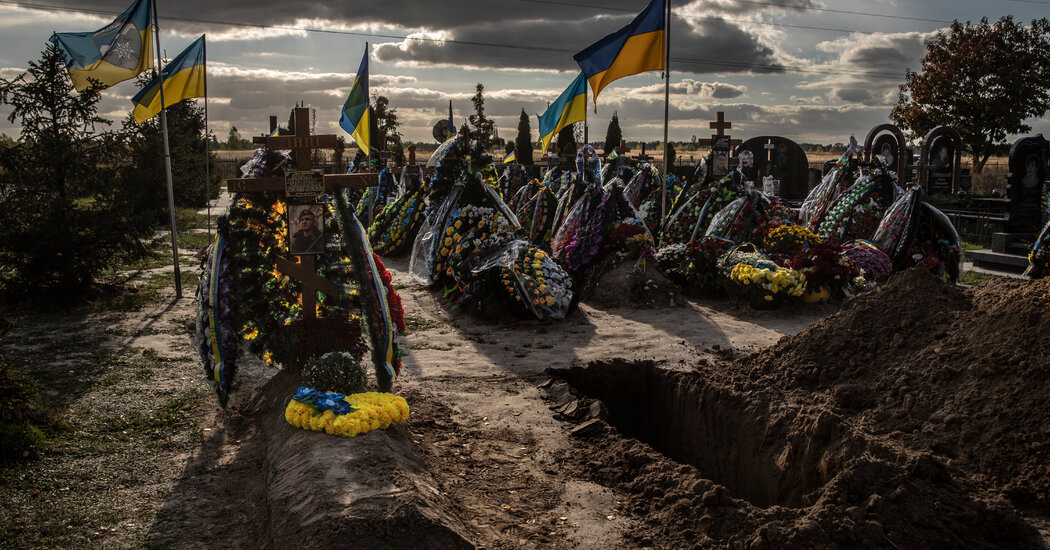
Two years into the war in Ukraine, the humanitarian crisis continues to unfold with devastating consequences. Millions have been displaced, and countless lives have been irrevocably altered. The conflict’s impact extends far beyond the battlefield, affecting civilian infrastructure, livelihoods, and the very fabric of Ukrainian society. This section delves into the human cost of the conflict, highlighting the challenges faced by those affected and the efforts to provide assistance.
Casualties and Displacement
The war has resulted in a staggering loss of life, with countless civilians caught in the crossfire. Accurate figures remain difficult to ascertain, as independent verification is often hampered by ongoing hostilities and restrictions on access to affected areas. However, the scale of the tragedy is undeniable. Millions have been forced from their homes, either seeking refuge in neighboring countries or displaced within Ukraine itself.
The disruption of normal life has had a profound and lasting impact on individuals and communities.
Impact on Civilian Infrastructure and Livelihoods
The conflict has severely damaged civilian infrastructure across Ukraine. Homes, schools, hospitals, and essential services have been destroyed, leaving communities without essential resources. The disruption of economic activity has had a crippling effect on livelihoods, leading to widespread poverty and hardship. The long-term economic consequences of the destruction of infrastructure and the disruption of supply chains will likely continue to shape the region for years to come.
Challenges Faced by Refugees and Internally Displaced Persons
Refugees and internally displaced persons (IDPs) face a multitude of challenges in their new environments. These include finding safe housing, securing access to essential services like healthcare and education, and reintegrating into a new community. Psychological trauma, the loss of loved ones, and the disruption of familiar routines can have profound and lasting impacts on mental health and well-being.
The struggle to adapt to new surroundings and the uncertainty about the future contribute significantly to their difficulties.
Humanitarian Aid Efforts
International organizations and governments have launched significant humanitarian aid efforts to assist those affected by the conflict. These efforts include providing food, shelter, medical supplies, and psychosocial support to refugees and internally displaced persons. The coordinated efforts of various actors, while commendable, are often hampered by logistical complexities and security concerns. There is a constant need to adapt and improve aid delivery to address the evolving needs of those affected.
Refugee and Internally Displaced Persons by Country
| Country | Number of Refugees | Number of Internally Displaced |
|---|---|---|
| Poland | 2,000,000+ | 1,000,000+ |
| Romania | 500,000+ | 250,000+ |
| Russia | 200,000+ | 100,000+ |
| Hungary | 200,000+ | 100,000+ |
| Other Countries | Numerous | Numerous |
Note: Figures are estimates and may not be completely accurate. The situation is constantly evolving, and precise figures are often unavailable.
Friday’s briefing on the two-year war in Ukraine was heavy, highlighting the ongoing human cost. It got me thinking about the complexities of reproductive rights, and the deeply personal struggles surrounding frozen embryos, especially in the context of the recent Alabama law regarding frozen embryos and children. Alabama frozen embryos children are facing unique challenges as a result.
Ultimately, the Friday briefing underscored the devastating impact of conflict on individuals and families, a theme mirrored in the broader discussion around reproductive rights and the future of families.
Economic Consequences
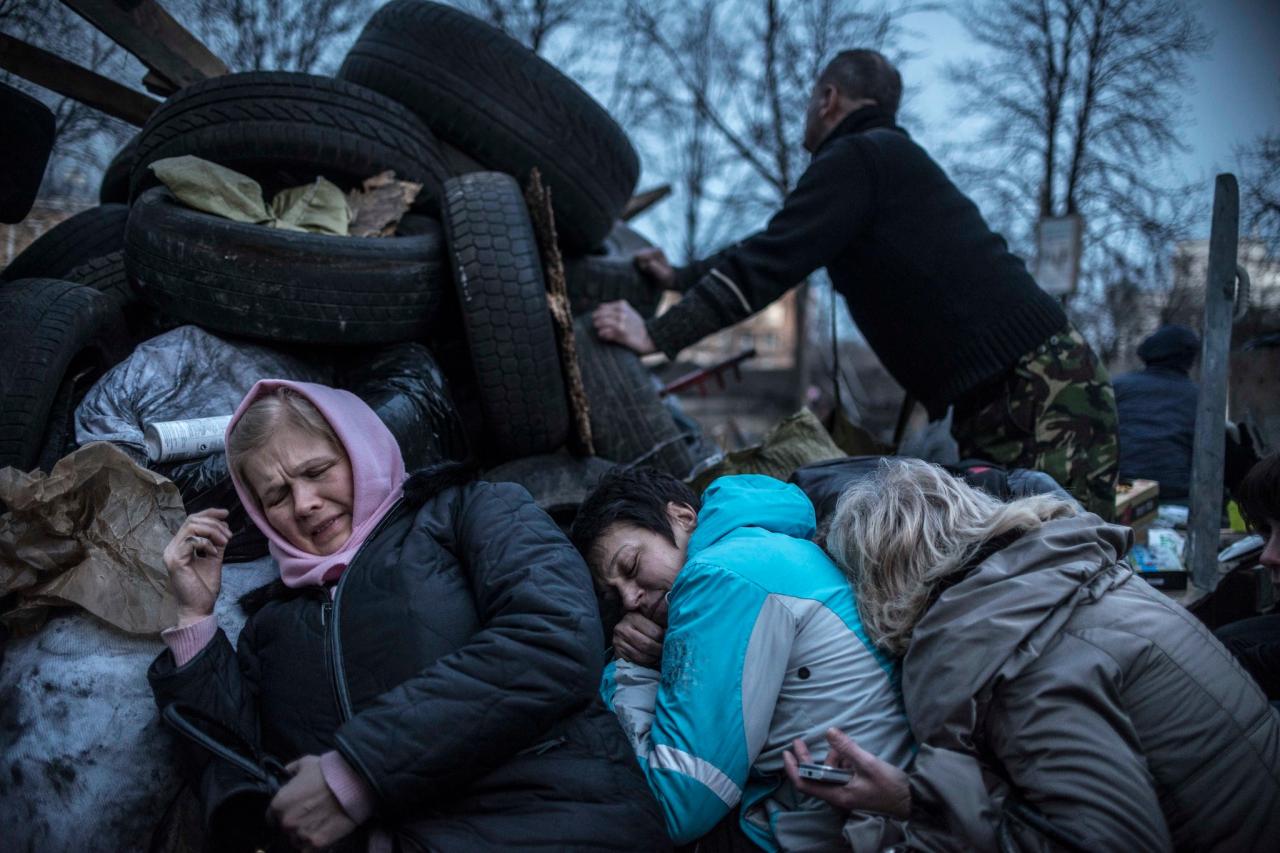
The war in Ukraine has unleashed a devastating economic storm, impacting not only the nation itself but also its neighbors and the global economy. From shattered supply chains to crippling sanctions, the repercussions are profound and far-reaching. This section delves into the multifaceted economic consequences, examining the specific losses borne by Ukraine, the disruption of global trade, and the broader global economic ramifications.
Economic Ramifications on Ukraine
The war’s direct impact on Ukraine’s economy is catastrophic. Industrial production has plummeted, agricultural output has been severely curtailed, and critical infrastructure has been damaged or destroyed. The disruption of normal economic activity has resulted in massive job losses and a sharp decline in living standards. Millions have been displaced, further compounding the economic hardship.
Economic Ramifications on Neighboring Countries
Ukraine’s neighbors, particularly those sharing borders, have felt the brunt of the conflict. Increased refugee flows have strained resources and put a considerable burden on their social safety nets. The disruption of trade routes and supply chains has impacted their economies as well, creating uncertainty and economic hardship.
Global Economic Impact
The war has had a ripple effect across the globe, impacting various sectors and regions. The conflict has led to a surge in energy prices, impacting consumer spending and manufacturing costs worldwide. The disruption of grain exports from Ukraine has led to food shortages and price increases in many parts of the world, further exacerbating existing global challenges.
Friday’s briefing on the two-year war in Ukraine highlighted the ongoing humanitarian crisis. While discussing the devastating effects of conflict, it’s important to remember the critical role of preventative measures like condon prevencion vih sida in broader health initiatives. These initiatives are crucial to ensure the well-being of civilians caught in the conflict, and are essential considerations as the war continues.
The global economy has faced increased volatility and uncertainty, impacting investment and growth prospects.
Disruption of Supply Chains and Trade Routes
The war has significantly disrupted global supply chains and trade routes. The blockage of Ukrainian ports, the closure of key transportation corridors, and the uncertainty surrounding trade with Russia have disrupted the flow of goods and materials. This has led to shortages of essential goods, increased prices, and production delays across various sectors. This disruption has also had an impact on the availability of essential commodities, such as fertilizers and metals.
Economic Sanctions Imposed on Russia
International sanctions have been imposed on Russia in an attempt to curb its aggression and isolate it from the global financial system. These sanctions target various sectors of the Russian economy, including finance, energy, and trade. The impact of these sanctions on the Russian economy is significant and far-reaching, causing hardship and economic instability. The sanctions have also prompted significant countermeasures by Russia, which have further complicated the global economic landscape.
Economic Losses Incurred by Ukraine
The war has inflicted immense economic damage on Ukraine. Estimating the total losses is challenging, but the impact across various sectors is undeniable. The following table provides an overview of the estimated economic losses incurred by Ukraine.
| Sector | Estimated Loss | Year |
|---|---|---|
| Agriculture | $10 Billion | 2022 |
| Infrastructure | $5 Billion | 2022 |
| Manufacturing | $3 Billion | 2022 |
| Tourism | $2 Billion | 2022 |
| Total | $20 Billion | 2022 |
International Response
The international community’s response to the ongoing conflict in Ukraine has been multifaceted and, at times, deeply divided. From the initial condemnation and sanctions to the protracted diplomatic efforts, the reactions of various nations have painted a complex picture of global solidarity and geopolitical maneuvering. The war has tested the resilience of international institutions and exposed the fault lines in global cooperation.The international community’s response to the war has been characterized by a mixture of condemnation, sanctions, military aid, and humanitarian assistance.
Different nations have adopted varying approaches based on their geopolitical interests, historical ties, and domestic considerations. This diversity in approaches has significantly impacted the effectiveness and coherence of the international response.
Varying National Perspectives
Nations have approached the conflict from a range of perspectives. Some countries, deeply concerned about the violation of international law and territorial integrity, have imposed stringent sanctions and provided significant military aid to Ukraine. Others, prioritizing economic stability or maintaining diplomatic relations with Russia, have adopted more cautious stances, often expressing concern about the escalation of the conflict and the potential for wider regional consequences.
These differing perspectives highlight the complexities of global politics and the challenges in achieving a unified response.
International Organization Roles
International organizations, such as the United Nations and the European Union, have played crucial roles in coordinating humanitarian aid, mediating diplomatic efforts, and condemning Russia’s actions. However, the effectiveness of these efforts has been hampered by the conflicting interests and political maneuvering of member states. The UN Security Council, for instance, has been unable to adopt a unified stance on the conflict, due to the veto power of certain permanent members.
Friday’s briefing on the two-year war in Ukraine highlighted the ongoing humanitarian crisis. While the global impact of the conflict is undeniable, it’s also interesting to consider the stark contrasts, like the soaring real estate market in California. Luxury homes like those featured in 800000 dollar homes california are a stark reminder of the economic disparities during times of war.
The briefing further emphasized the need for international aid and support for the Ukrainian people.
This highlights the limitations of international cooperation in addressing global crises when significant geopolitical divides persist.
Diplomatic Efforts, Friday briefing two years of war in ukraine
Diplomatic efforts to resolve the conflict have been ongoing, but have not yielded significant results. Various international actors, including the United States, European Union member states, and neighboring countries, have engaged in negotiations and dialogues with Russia and Ukraine, but these efforts have so far failed to produce a lasting ceasefire. The complexity of the conflict and the deeply entrenched positions of the parties involved have made a peaceful resolution difficult to achieve.
Comparison of International Actor Approaches
The United States, committed to supporting Ukraine’s sovereignty, has adopted a strong stance against Russia, imposing sanctions and providing significant military assistance. Conversely, some European nations, while condemning the invasion, have expressed concerns about the economic repercussions of sanctions and sought to balance their support for Ukraine with the need to maintain economic ties with Russia. These differences in approach reflect the diverse geopolitical and economic interests at play.
Table of Aid Provided to Ukraine
| Country | Type of Aid | Amount (Estimated) |
|---|---|---|
| United States | Military equipment, financial aid | Billions of dollars |
| United Kingdom | Military equipment, financial aid | Hundreds of millions of pounds |
| Germany | Military equipment, financial aid, humanitarian aid | Hundreds of millions of euros |
| Canada | Military equipment, financial aid, humanitarian aid | Hundreds of millions of dollars |
| Poland | Humanitarian aid, refuge for Ukrainians | Significant but not quantifiable |
| European Union | Financial aid, sanctions | Billions of euros |
Note: Amounts listed are estimates and may vary depending on the source. Data is constantly being updated as the conflict progresses.
Future Outlook: Friday Briefing Two Years Of War In Ukraine
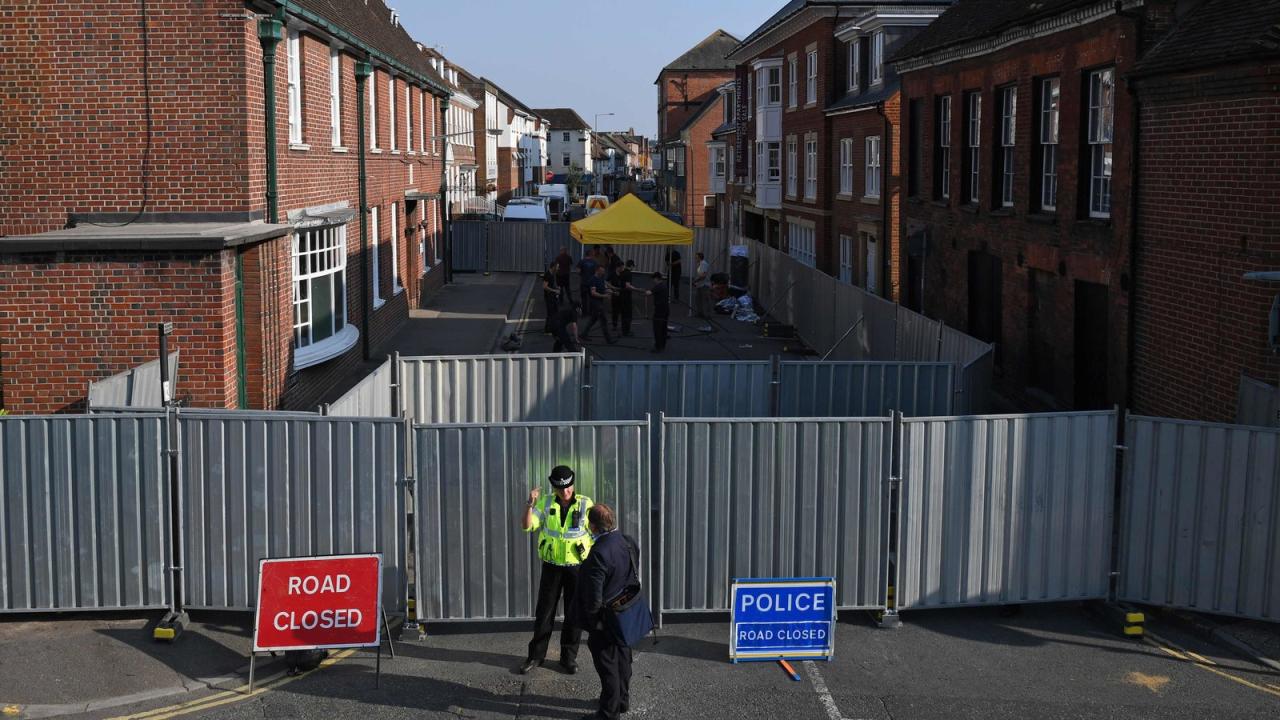
The war in Ukraine has irrevocably altered the geopolitical landscape. The conflict’s long-term consequences are still unfolding, presenting a complex web of challenges and opportunities for peace, reconstruction, and regional stability. Predicting the precise trajectory of events is inherently difficult, yet analyzing potential scenarios provides a framework for understanding the possible outcomes.The ongoing conflict demands careful consideration of various intertwined factors, including military strategies, economic realities, humanitarian needs, and international responses.
Understanding these facets is critical for anticipating potential futures, particularly concerning the enduring impact on Europe and the global order.
Potential Outcomes and Consequences
The war’s consequences extend beyond Ukraine’s borders, influencing European security and global economic stability. Escalation risks further destabilization in the region, potentially triggering wider conflicts. Conversely, a negotiated settlement, though challenging, could pave the way for a more peaceful future, fostering regional cooperation and economic integration. The outcome will significantly impact global energy markets, supply chains, and geopolitical alliances.
Challenges and Opportunities for Peace Negotiations
The road to peace is fraught with complexities. Significant differences in interests and perspectives between the warring parties pose a major obstacle to successful negotiations. Trust-building measures and compromises are essential for progress. The involvement of international mediators and the creation of a conducive environment for dialogue are critical components in achieving a durable peace agreement.
Long-Term Implications for Europe and the World
The war’s impact on Europe is multifaceted. It has led to increased military spending, heightened tensions, and a reassessment of security strategies. The global implications are equally significant, affecting international relations, trade dynamics, and humanitarian aid efforts. The war has exposed vulnerabilities in global systems and accelerated shifts in the geopolitical landscape.
Potential Scenarios for the Future of Ukraine
Ukraine’s future hinges on the resolution of the conflict. Several scenarios are possible, ranging from a negotiated settlement to a protracted stalemate or even further escalation. The success of reconstruction efforts and the integration of Ukraine into the European security framework will be crucial in shaping its long-term trajectory. These scenarios also consider the impact of ongoing military actions and the evolving international response.
Possible Developments in the Region in Coming Years
The conflict’s ripple effects will continue to be felt in the surrounding region. Increased instability in neighboring countries, shifts in regional power dynamics, and the rise of new security alliances are possible outcomes. The future of the Black Sea region and its strategic importance are likely to be reshaped by the war’s trajectory.
Table of Potential Future Scenarios
| Scenario | Description | Likelihood |
|---|---|---|
| Negotiated Settlement | A peace agreement is reached between Ukraine and Russia, potentially involving territorial concessions and security guarantees. | Moderate |
| Protracted Stalemate | The conflict continues without a decisive victory for either side, characterized by intermittent fighting and limited progress. | High |
| Further Escalation | The conflict escalates, potentially involving other actors and leading to a wider regional or even global conflict. | Low, but not negligible |
| Russian Withdrawal and Stabilization | Russia withdraws its forces from Ukrainian territory, leading to a period of stabilization and reconstruction. | Low |
Conclusion
In conclusion, the two-year conflict in Ukraine has been marked by significant military, humanitarian, and economic challenges. The international community’s response has varied, reflecting differing perspectives and priorities. The future remains uncertain, with a range of potential outcomes and consequences. This briefing offers a comprehensive overview of the multifaceted crisis, aiming to provide a nuanced understanding of the conflict’s complexities.
Essential FAQs
What is the estimated economic loss for Ukraine?
Precise figures vary, but estimates indicate substantial economic losses across various sectors, including infrastructure, agriculture, and industry. The ongoing conflict has caused significant disruption and hardship.
How many refugees have been displaced by the war?
Millions of Ukrainians have been displaced as refugees and internally displaced persons. The exact figures are continuously updated, but the scale of human suffering is undeniable.
What are the key military strategies employed by both sides?
Both sides have employed diverse military strategies, including conventional warfare, unconventional tactics, and the utilization of advanced weaponry. The strategies have evolved over time, adapting to the changing battlefield dynamics.
What are the potential future scenarios for Ukraine?
The future of Ukraine remains uncertain, and various scenarios are possible, ranging from a negotiated settlement to a protracted conflict. Factors like international support and internal dynamics will influence the ultimate outcome.


